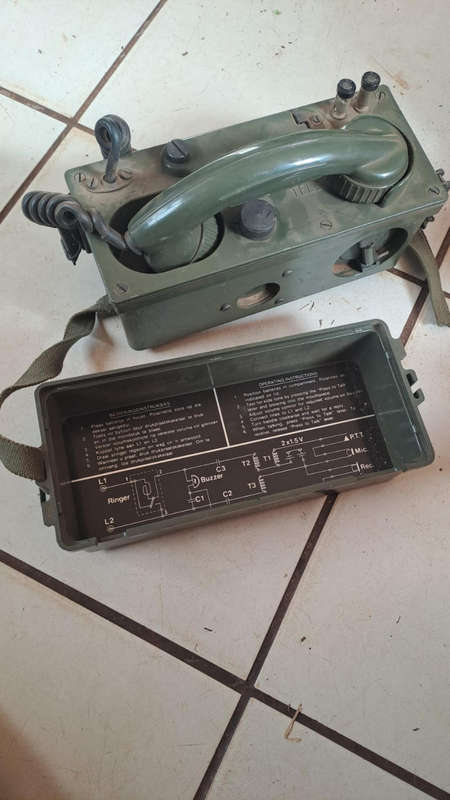
Military field telephone
Check my rate
| Main centres: | 1-3 business days |
| Regional areas: | 3-4 business days |
| Remote areas: | 3-5 business days |

| Main centres: | 1-3 business days |
| Regional areas: | 3-4 business days |
| Remote areas: | 3-5 business days |
The image displays a vintage military field telephone. These robust, portable devices were designed for communication in combat zones or other rugged environments where standard telephone infrastructure was unavailable.
Here's what can be generally inferred about this type of device:
Purpose: Field telephones were used for military communication, allowing soldiers to establish wired connections between positions, command posts, or with a central switchboard. They offered a more secure and reliable communication method than early radios in certain scenarios, though they were vulnerable to wire cuts.
Design: They are typically housed in durable, often olive drab (green) cases to withstand harsh conditions. The one in your image appears to be made of a sturdy metal or Bakelite material.
Components:
Handset: The green, telephone-like receiver and mouthpiece combination for speaking and listening.
Crank/Generator: Many older field telephones feature a hand-cranked magneto generator (often on the side, though not fully visible here) to produce the ringing current to signal the other end of the line.
Battery Compartment: The open compartment visible in the lower part of your image likely holds batteries (as indicated by the "2 x 1.5V" label) to power the voice transmission circuit.
Terminals: Connectors for attaching the communication wire (often marked "Line," "L1," "L2" or similar).
Operating Instructions: The label inside the lid provides instructions in multiple languages (likely including Afrikaans based on the "BEDIENINGSVOORSKRIFTE" which means "Operating Instructions" in Afrikaans, and English) on how to set up and operate the phone, including battery installation and connection diagrams for ringing and talking. The diagram shows "Ringer," "Buzzer," "T1," "T2," "T3," "PTT," "Mic," and "Rec," which are standard components and functions for a field phone (Ringer for the bell, Buzzer for an audible signal, T1/T2/T3 for various line connections, PTT for Push-to-Talk, Mic for microphone, and Rec for receiver).
Operation: They usually work on a "local battery" (LB) or "common battery" (CB) system. The local battery system means each phone has its own batteries for talking, and the hand crank generates power for ringing.
Historical Context: Field telephones have been in use since the late 19th century and were widely employed in both World Wars and subsequent conflicts like the Korean and Vietnam Wars. Models like the US Army's EE-8 and TA-312 are well-known examples. The presence of Afrikaans on the label suggests this particular unit may have been used by the South African Defence Force (SADF), as there's information online about "SADF Tele-71 Mark II Field Telephone" from the 1960s.
Without more specific markings or serial numbers, it's hard to pinpoint the exact model or year of manufacture, but it clearly falls into the category of vintage military field telephones. These items are often collected by military history enthusiasts.